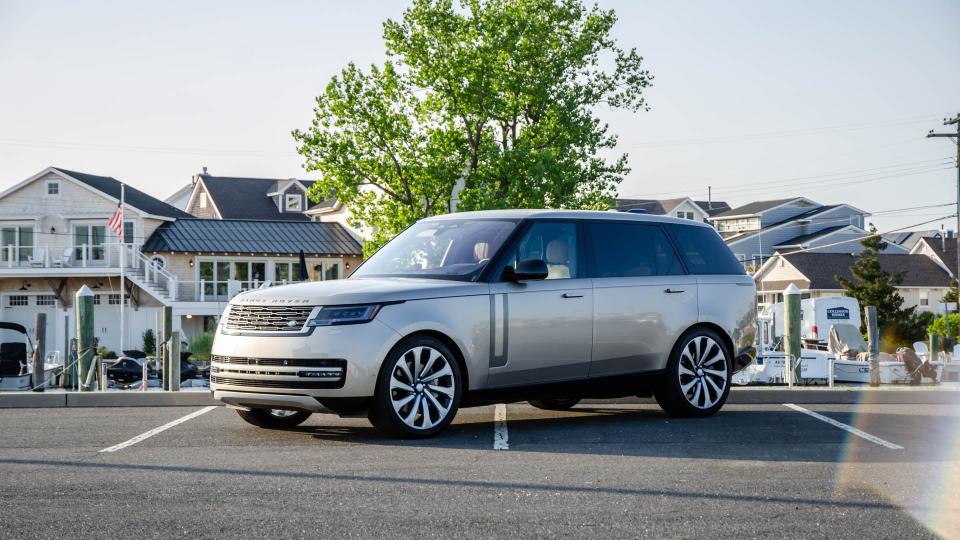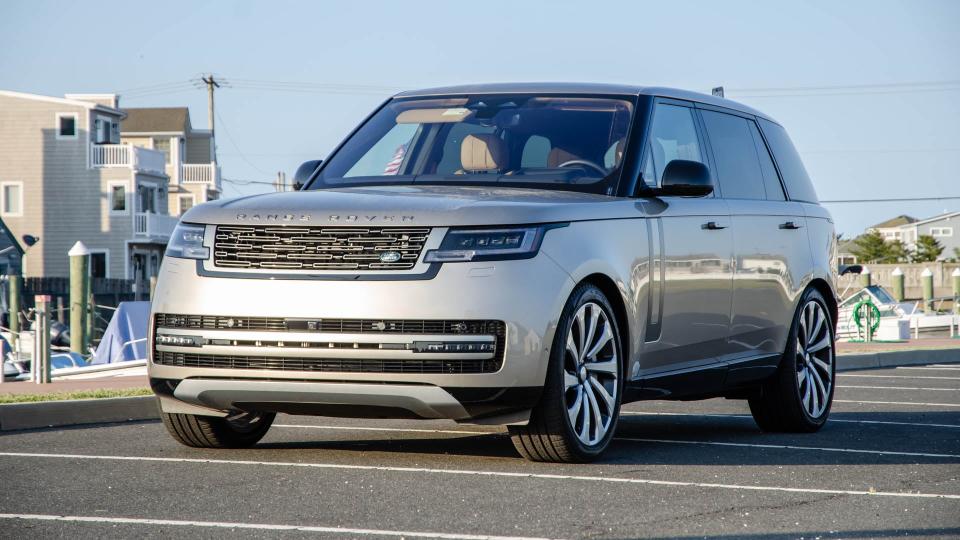2023 Range Rover Review: For Those Who Are Used to the Front of the Plane

The wealthy are sometimes mocked for owning Range Rovers. “Look at these goons, lumbering around in their massive, chunky rigs despite never even having the slightest desire to use their off-roading capabilities.” Why drive such a big, capable SUV if you’re only going to cruise the perfectly paved streets of Beverly Hills? Well, all you need to do is drive the 2023 Range Rover for a few hours and you’ll understand why.
I actually picked this Range Rover test car with my son in mind, which I don’t normally do. I figured we’d have some father-son bonding time since his one-and-a-half-year-old little sibling is taking up most of my mental and physical bandwidth. He’s used to driving on the highway in my E90 3 Series, which is decently quiet inside but interior wind/road noise standards just weren’t as good back in 2006 as they are now. So, as night fell and ambient lighting bathed the cabin setting off in the Range Rover, its quiet refinement immediately lulled him to sleep.


The rest of the two-hour drive home felt like flying first class, with only the gentle bustle of wind noise and quiet V8 rumble keeping me company. It was one of the most comfortable, relaxing, and luxurious drives I’ve ever done, and it made me realize why so many people buy Range Rovers.
2023 Range Rover Specs | |
|---|---|
The Basics
In addition to dropping Land Rover as its official marque, the 2023 Range Rover P530 does something a bit controversial for Rover enthusiasts: it uses a German engine. Instead of the old Jaguar 5.0-liter supercharged V8, the new Range Rover uses a 4.4-liter twin-turbocharged V8 from BMW. Like every BMW that uses this same engine, it makes 523 horsepower and 553 lb-ft of torque and pairs with an eight-speed automatic transmission. Don’t think that it’s lost its Range Rover ways, though, as power is still sent to all four wheels, traveling through two electronic locking differentials, one in the center and one at the rear.



You’d be forgiven for not immediately being able to separate the new 2023 model from the previous generation, as their designs are almost identical. Land Rover opted for a slow, evolutionary design with this new Range Rover and it’s hard to argue with the results. It’s immediately recognizable as the big boy Rover, while still looking sleek and refined. If you’re looking for a flashy SUV, the relatively understated RR isn’t for you, but I appreciated its subtle, sophisticated looks. I personally didn’t love the Batumi Gold paint, but the optional 23-inch SV Bespoke wheels added some visual pop.
I didn’t love the Caraway interior color, either. The combination of a muted gold exterior with a tan interior made my tester feel very Miami-retiree-spec. That said, there’s very little else to complain about inside. The Range Rover’s cabin is lovely, with incredibly rich-feeling materials, mostly fantastic seats (more on those later), and gorgeous wood trim. It’s also a surprisingly good family car, as the doors open almost 90 degrees for easier car seat access. The back seats slide and recline, and third-row access is a cinch thanks to clearly labeled seat buttons. Each and every time I climbed into the big Range, I felt like a million bucks, which is exactly what you want in such an expensive, opulent SUV.




Driving the Range Rover P530
I’ll admit, it felt a bit odd to start the Range Rover up for the first time, knowing that a BMW engine was under the hood. However, once on the move, I never cared. Stomping the gas pedal produces grin-inducing tidal waves of torque. The nose rises, the back end squats, and it surges forward like a private jet taking off. There are lovely aluminum paddles behind the steering wheel for shifting gears manually, but they’re more decorative than functional. There’s no point in using them, as the eight-speed auto never puts a foot wrong on its own and the Range Rover never feels sporty enough to warrant using them. The BMW powertrain might not match the Range Rover’s typically British character, but it’s hard to argue with the results.
As expected, the Range Rover glides across pavement with its adaptive air suspension. While massive 23-inch wheels did add a touch of harshness over the sharpest of bumps, the ride was mostly excellent. That smooth ride combines with its incredibly quiet cabin to create the most serene driving experience I’ve had from a car without a Rolls-Royce or Bentley badge.

Even more impressive, though, is how well it dances around the road. Its steering is perfectly weighted for a luxury SUV of this size, with just the right amount of heft to let you know what’s going on. Weight builds up nicely off-center and the front end is more accurate than it needs to be. If you take corners at speed, the air suspension and active anti-roll bars will prop up the outside of the car to keep it from leaning too hard. And it works so well that it almost feels like magic. An SUV as tall and as heavy as the Range Rover shouldn't be able to take corners as well as it does. While it’s never particularly sporty, it always feels composed and capable.
Being a Range Rover, it has two locking differentials, one center and one at the rear axle. There are all manner of cool off-road screens that show you how much power is going to each axle or wheel, the car’s pitch and yaw, and even wade depth sensors. I didn’t take the Range Rover off-road, as I was afraid to scuff its massive (and presumably massively expensive) wheels, nor did I feel confident taking it through dirt and mud on normal road tires. Yet, the Range Rover has a reputation for being a capable off-roader and it has the hardware to back it up. Its big wheels and lowish-profile tires won't let it hang with Jeep Wranglers or Toyota Land Cruisers but, with two locking diffs and adjustable air suspension, it should be able to handle anything its customers can realistically throw at it with ease.

 Yahoo Autos
Yahoo Autos 